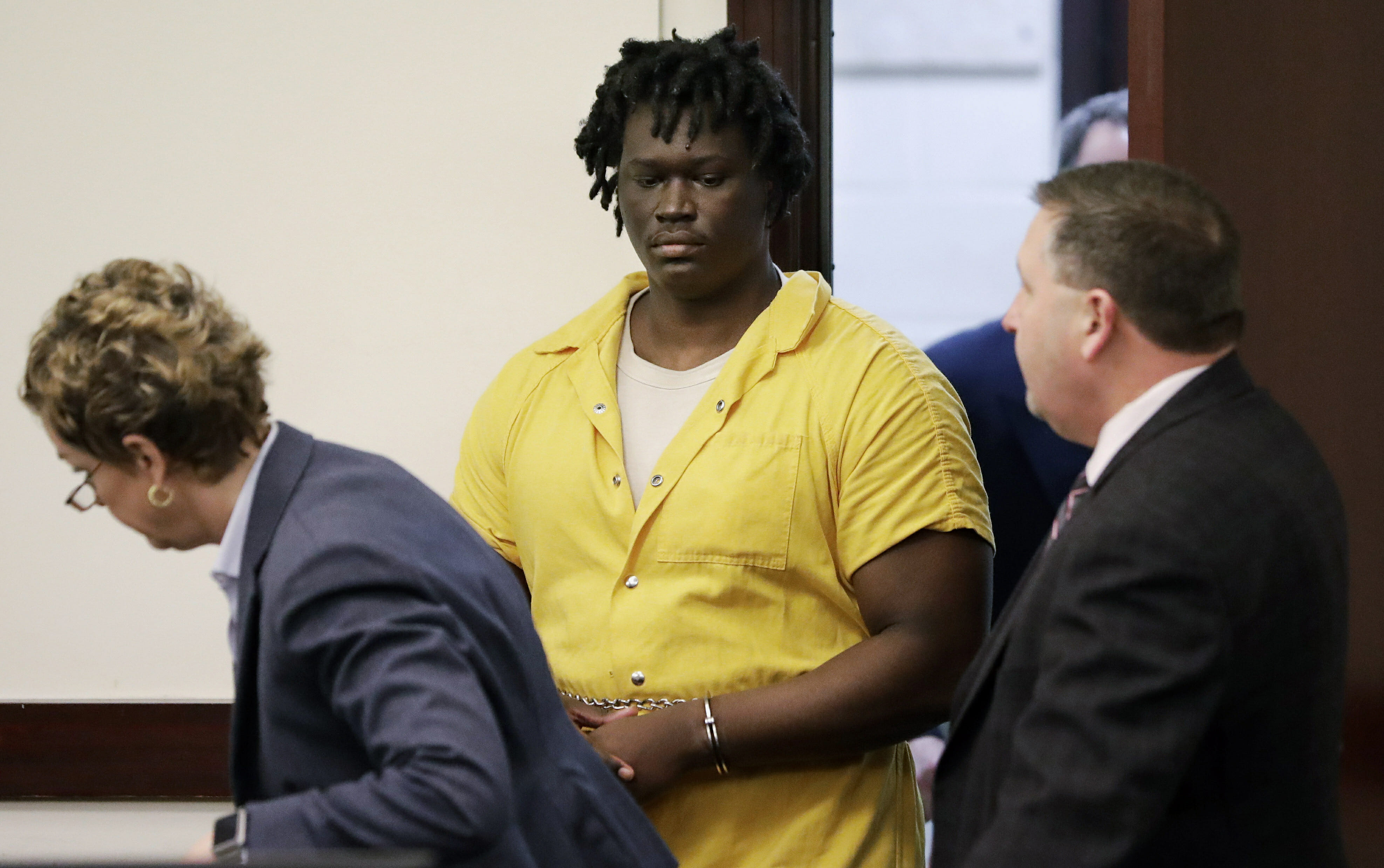
Trial for Tennessee church shooting suspect to start Monday
NASHVILLE, Tenn. (AP) — A prosecutor said Monday that a black man charged with fatally shooting a woman and wounding seven people at a Nashville church aimed to kill at least 10 white churchgoers and cited a 2015 massacre at a black church in South Carolina.
Nashville Deputy District Attorney Amy Hunter made the comments during opening statements in the trial of Emanuel Kidega Samson, 27. Prosecutors have said they’re seeking life without parole for Samson, who faces a 43-count indictment, including a first-degree murder charge, in the September 2017 shooting at Burnette Chapel Church of Christ.
Samson’s attorney, Jennifer Lynn Thompson, countered that Samson’s true intention was to kill himself. He left a suicide note for his girlfriend and sent a goodbye video to his cousin, according to Thompson.
Members of the church packed the courtroom, at times becoming emotional when attorneys and witnesses recounted a Sunday filled with chaos, tragedy and heroism. The shooting rampage killed 38-year-old Melanie L. Crow of Smyrna, Tennessee. She was shot in the church parking lot, and dropped her Bible and notes from a recently concluded worship ceremony that had just concluded, Hunter said.
Samson, who used to attend the church, is black and the victims are white. Hunter explained that a note in Samson’s car cited white supremacist Dylann Roof’s massacre at a black church in Charleston, South Carolina, in 2015. It also referenced the red, black and green Pan-African flag, sometimes called RBG.
“Dylann Roof is less than nothing,” the note read, Hunter said. “The blood that 10 of your kind will shed is that of the color upon the RBG flag in terms of vengeance.” The note included an expletive and ended with a smiley face, Hunter said.
“This state will prove beyond all reasonable doubt that on Sept. 24, 2017, this defendant, Emanuel Kidega Samson, went to the Burnette Chapel Church of Christ with the intent to murder a minimum of 10 white churchgoers on that day,” Hunter said. “You won’t have to take the state’s word for it though.”
An arrest affidavit said Samson waived his rights and told police he arrived armed and fired at the church, described by the prosecutor as a multicultural, multigenerational community where everyone knows everyone.
Hunter also said the calamity revealed a “true life hero.”
Churchgoer Robert Caleb Engle has testified that during the rampage, he twice confronted the gunman, who was wearing a tactical vest and a motorcycle-style mask with a clown smile on it. Engle said he was pistol-whipped three times in the head. At one point, he pushed the gun back on the shooter and a shot fired, striking the gunman and sending him to the ground.
Engle said his father kicked the gun away, stood on the shooter’s hand and told Engle to go get his gun out of his truck.
Engle came back with his weapon, put his foot on the shooter’s back and stood guard until first responders arrived.
A judge’s order had kept many details of the case secret until trial.
At a hearing in April, it was revealed that a psychiatrist diagnosed Samson with “schizoaffective disorder bipolar type” and post-traumatic stress disorder after an abusive, violent upbringing.
“What this case is about is a man who was very sad, very suicidal, and he was looking to die that day,” Thompson told jurors Monday.
The Western Journal has not reviewed this Associated Press story prior to publication. Therefore, it may contain editorial bias or may in some other way not meet our normal editorial standards. It is provided to our readers as a service from The Western Journal.
Truth and Accuracy
We are committed to truth and accuracy in all of our journalism. Read our editorial standards.
Advertise with The Western Journal and reach millions of highly engaged readers, while supporting our work. Advertise Today.












